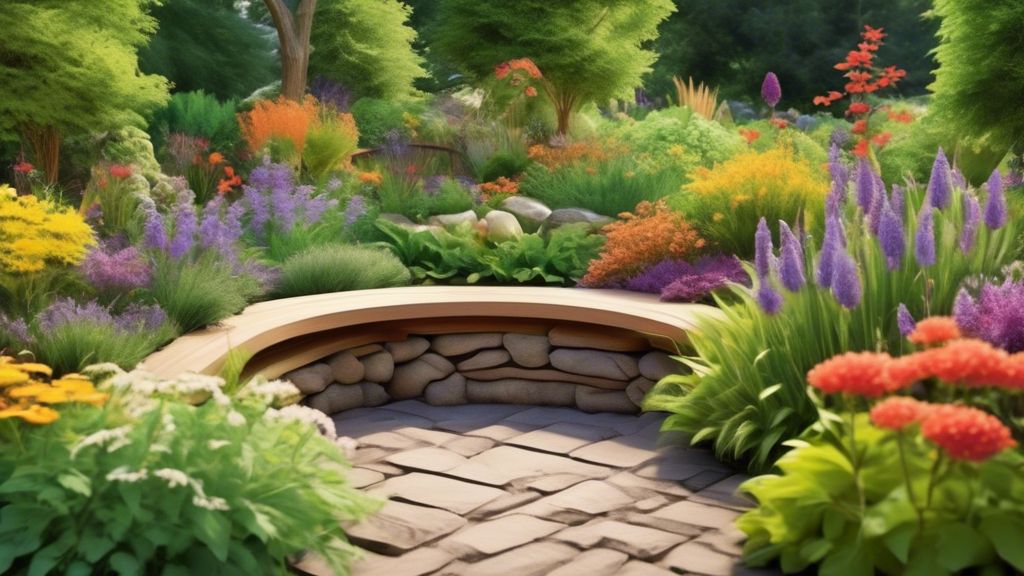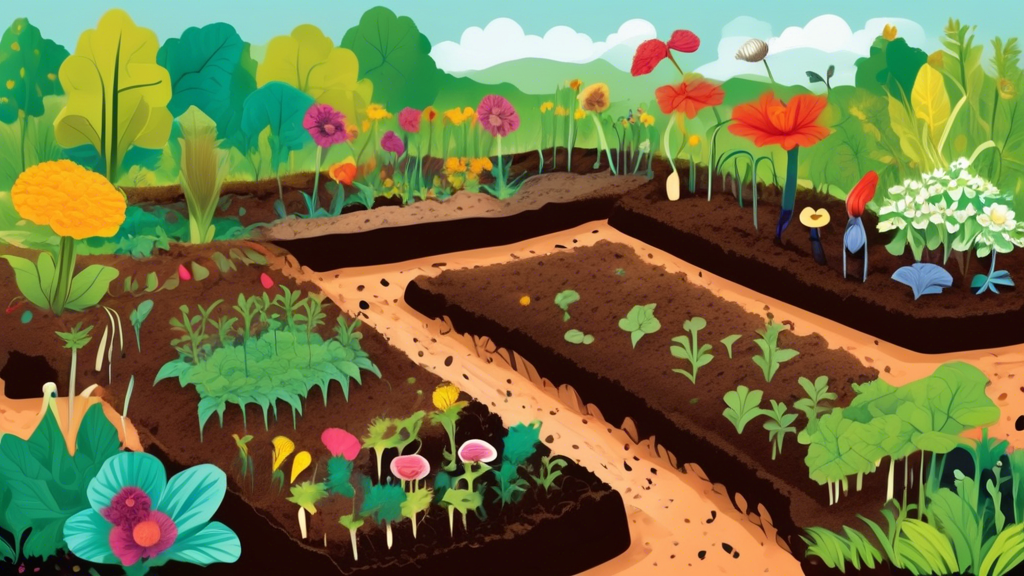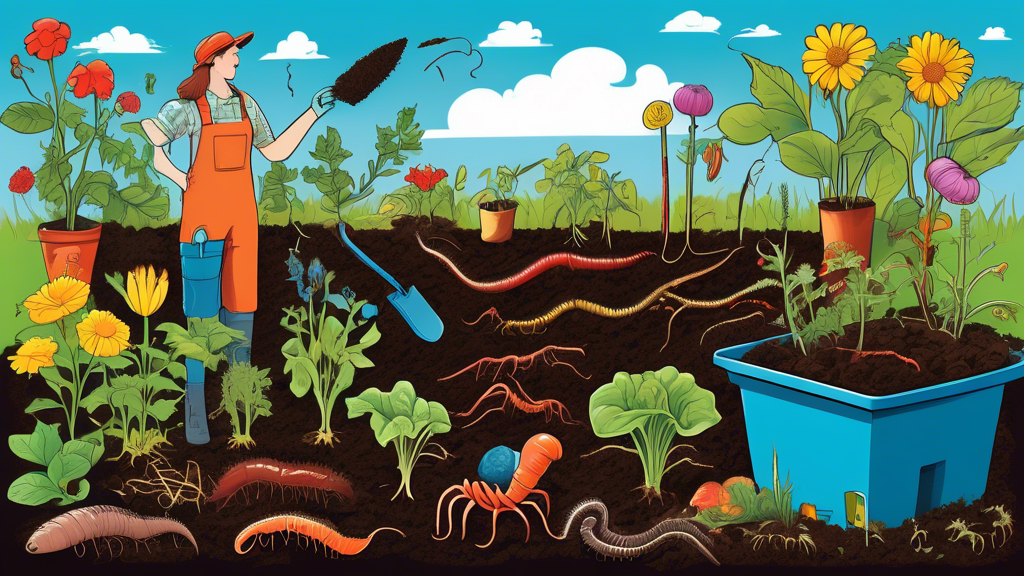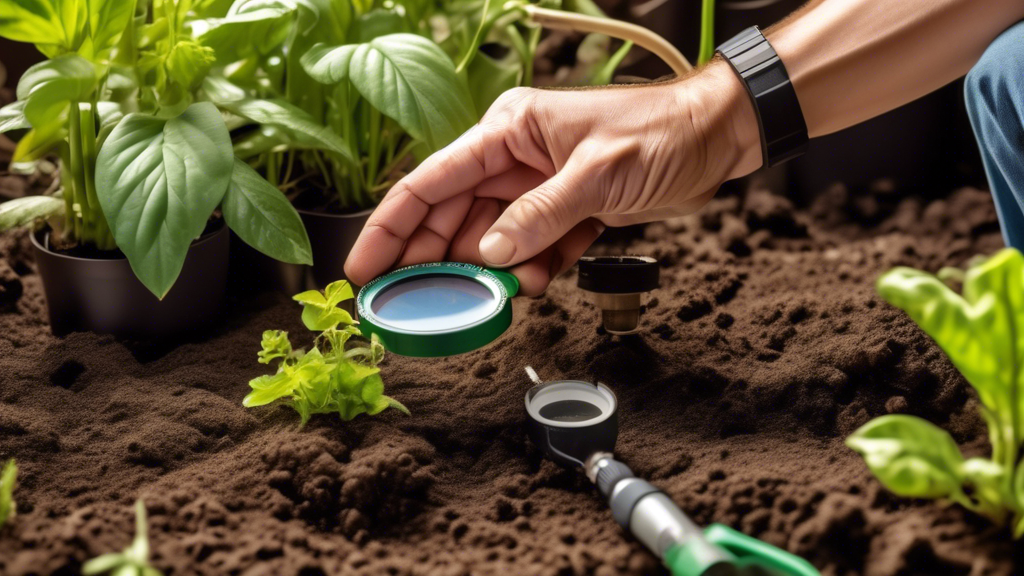
Why Start a Drought-Resistant Garden?
Creating a drought-resistant garden, often called xeriscaping, isn’t about giving up on a beautiful yard. It’s about making a smart, sustainable choice that saves you time, money, and a precious resource. Let’s look at the core benefits that address common gardening frustrations.
Problems You’ll Solve
- Sky-High Water Bills: Transform your garden from a financial drain into a cost-saving asset.
- Local Water Restrictions: Build a landscape that remains vibrant and healthy, even during hosepipe bans and droughts.
- Endless Weekend Chores: Dramatically cut down on the time spent watering, weeding, and maintaining your garden.
- The “Waste” Guilt: Garden with a clear conscience, knowing you are stewarding water responsibly.
The First Step: Understanding Your Soil
Before you plant a single seed, the most critical step is understanding what’s under your feet. Your soil’s composition dictates how water behaves, making it the foundation of a water-wise garden.
The Secret is in the Soil
A common issue for beginners is watching water run off the surface or pool in certain spots, never truly benefiting the plants. The solution starts with a simple diagnosis.
- The Simple Jar Test: Take a glass jar, fill it one-third with soil, and two-thirds with water. Shake it vigorously and let it settle for 24 hours. The layers that form will show you the proportions of sand, silt, and clay, revealing your soil type.
- The Universal Fix: Organic Matter: No matter your soil type, the answer is almost always to add compost.
- Clay Soil: Compost breaks up dense particles, creating channels for air and water to penetrate and drain.
- Sandy Soil: Compost acts like a sponge, helping the soil retain moisture and nutrients that would otherwise wash away.
Unique Insight: A 3-inch layer of organic compost can increase the water-holding capacity of soil by up to 20,000 gallons per acre! Think of your soil not as dirt, but as a reservoir. Amending it is like building a bigger, better reservoir for your plants.
Choosing the Right Plants for a Dry Climate
Plant selection is where your drought-resistant garden comes to life. By choosing plants that are naturally adapted to dry conditions, you set yourself up for easy success.
Go Native for Guaranteed Success
Native plants are the undisputed champions of low-water gardening. They have evolved over millennia to thrive in your local climate, soil, and rainfall patterns, requiring minimal supplemental water once established.
Thirsty Plants vs. Drought-Tolerant Champions
| Thirsty Plants to Avoid | Drought-Tolerant Champions |
|---|---|
| Kentucky Bluegrass | Lavender |
| Impatiens | Sedum (Stonecrop) |
| Hydrangeas | Russian Sage |
| Annual Ryegrass | Succulents (e.g., Agave, Aloe) |
| Yarrow |
Look for the Clues
You can often spot a drought-tolerant plant just by looking at it. Evolution has equipped them with specific physical traits to conserve water.
- Silver or Gray Foliage: Plants like Lavender and Dusty Miller have light-colored leaves that reflect harsh sunlight, keeping them cooler and reducing water loss.
- Small, Thin, or Waxy Leaves: Herbs like Rosemary have small leaves with a waxy coating (cuticle) that minimizes evaporation.
- Deep Taproots: Plants like California Poppy send roots deep into the soil to access water reserves unavailable to shallow-rooted plants.
Smart Watering Strategies
Watering a drought-resistant garden isn’t about frequency; it’s about efficiency. The goal is to get every drop of water to the plant’s roots where it’s needed most.
Timing is Everything
Always water in the early morning. This allows water to soak deep into the soil before the midday sun can cause excessive evaporation, and it gives plant leaves time to dry, preventing fungal diseases.
Ditch the Sprinkler
How you deliver water is just as important as when you deliver it. Not all methods are created equal.
| Sprinklers | Drip Irrigation / Soaker Hoses |
|---|---|
| Lose up to 50% of water to evaporation and wind. | Achieve up to 90% water-use efficiency. |
| Water leaves and soil surface, encouraging weeds. | Deliver water slowly and directly to the root zone. |
| Promotes shallow root systems. | Encourages deep, strong, drought-resilient roots. |
Mulch: Your Garden’s Best Friend
Mulch is the unsung hero of the water-wise garden. It’s a simple addition that delivers a powerful punch of benefits.
The Ultimate Multi-Tasker
Are weeds constantly stealing water and your valuable time? Mulch is your answer. A 2-3 inch layer acts as a protective blanket for your soil.
- Weed Suppression: Blocks sunlight, preventing most weed seeds from germinating.
- Moisture Retention: Dramatically reduces water evaporation from the soil surface, meaning you water less often.
- Soil Temperature Control: Keeps plant roots cooler in the summer and warmer in the winter.
Types of Mulch: Organic mulches like wood chips or bark break down over time, enriching your soil. Inorganic mulches like gravel or stone are permanent and excellent for very hot, dry areas and around succulents.
Designing Your Garden for Water Efficiency
A little strategic planning in your garden layout can lead to massive water savings. This concept, called hydrozoning, is a core principle of xeriscaping.
Group Plants by Their Water Needs
Instead of scattering plants randomly, group them into “hydrozones” based on their water requirements. Place thirsty plants together in one area that receives more frequent irrigation, and group all your drought-tolerant natives in another area that thrives on minimal water. This allows you to water each zone precisely according to its needs, eliminating water waste.
Your First-Year Action Plan
Feeling overwhelmed? Don’t be. Here is a simple, step-by-step plan to get your drought-resistant garden started this weekend.
- Test Your Soil: Perform the jar test to understand what you’re working with.
- Amend the Soil: Mix a generous amount of compost into your planting beds.
- Start Small: Choose 3-5 easy, drought-tolerant plants from a local nursery.
- Install Irrigation: Lay a soaker hose through your new garden bed.
- Plant and Protect: Plant your selections, water them deeply, and apply a 3-inch layer of mulch.
- Observe and Learn: Watch how your plants respond and adjust your watering as needed.
Frequently Asked Questions
Is a drought-resistant garden just a rock garden?
Absolutely not! While rocks and gravel can be used as mulch, a drought-resistant garden can be incredibly lush, colorful, and diverse. It’s about selecting beautiful plants like flowering perennials, ornamental grasses, and shrubs that are naturally adapted to dry conditions, not about creating a barren landscape.
Do I have to remove all my existing plants?
Not at all. A gradual approach is often best. Start by converting one sunny, high-maintenance area, like a patch of lawn or a barren flower bed. You can slowly replace thirsty plants with drought-tolerant ones over time as your budget and schedule allow.
How often do I need to water a drought-resistant garden?
The first year is the “establishment period” where you will need to water more regularly to help plants develop deep root systems. After that, the goal is “deep and infrequent” watering. Many established native and drought-tolerant plants may only need a deep soak once every two or three weeks during extended dry spells, if at all.
Is it more expensive to start?
There can be an initial investment in quality soil amendments, a drip irrigation system, and plants. However, this is an investment that pays for itself. You will see immediate and long-term savings on your water bills and will spend far less on replacing plants that die from drought stress. It is a cost-effective, long-term strategy.
Embarking on your drought-resistant gardening journey is a rewarding endeavor that creates a beautiful, resilient outdoor space while conserving a vital resource. By starting with your soil, choosing the right plants, and implementing smart watering techniques, you are building a garden that is not only easier to maintain but also kinder to the planet. Start small, be patient, and enjoy the process.






